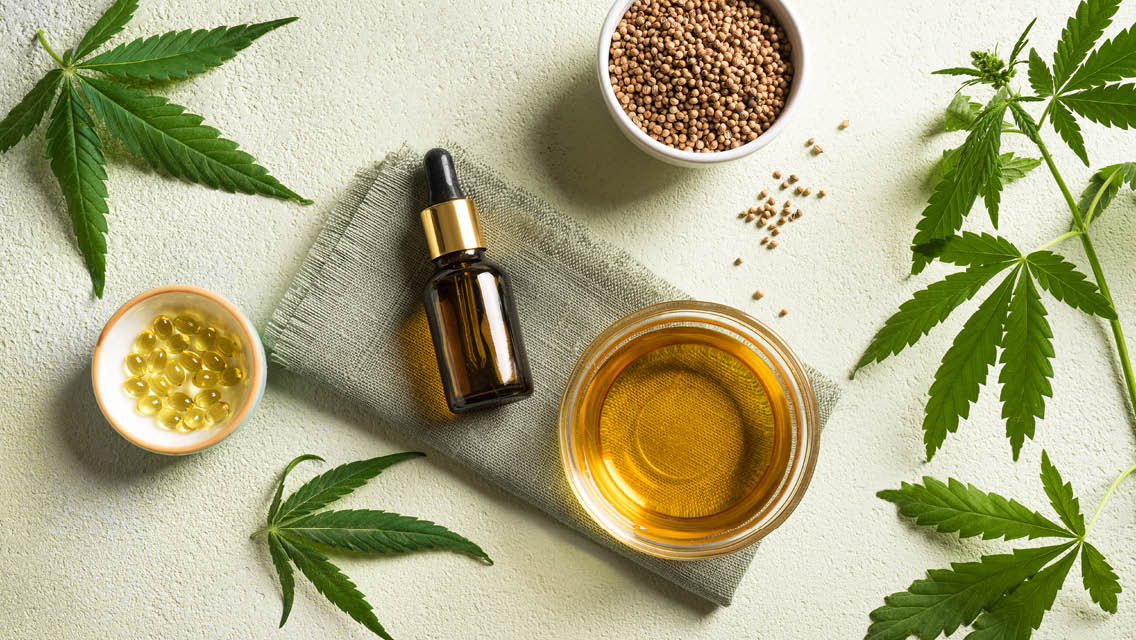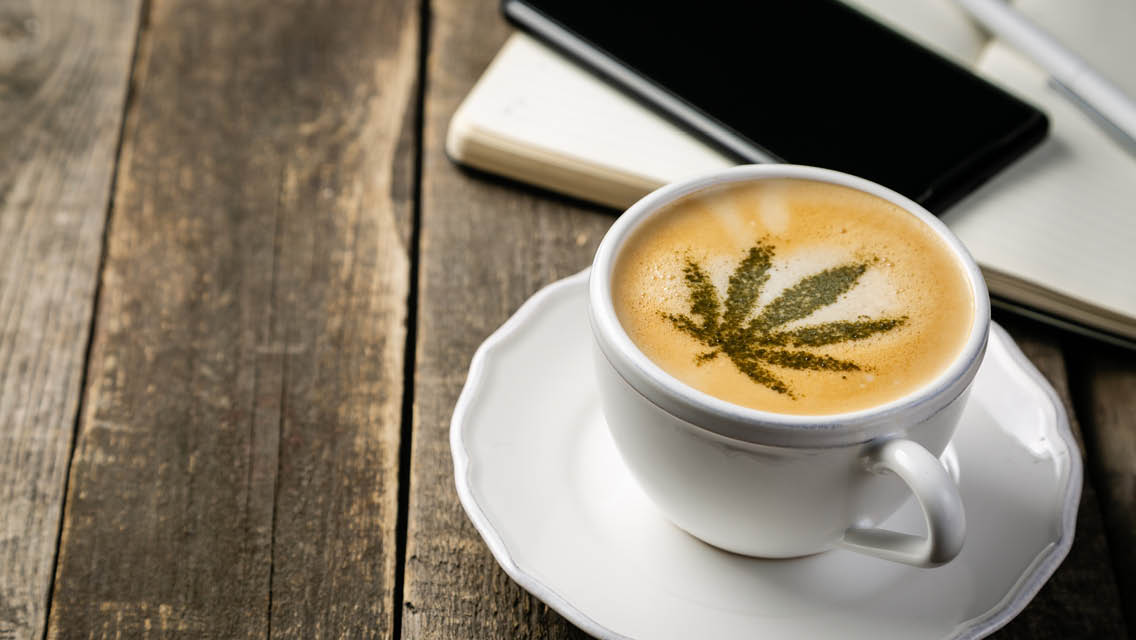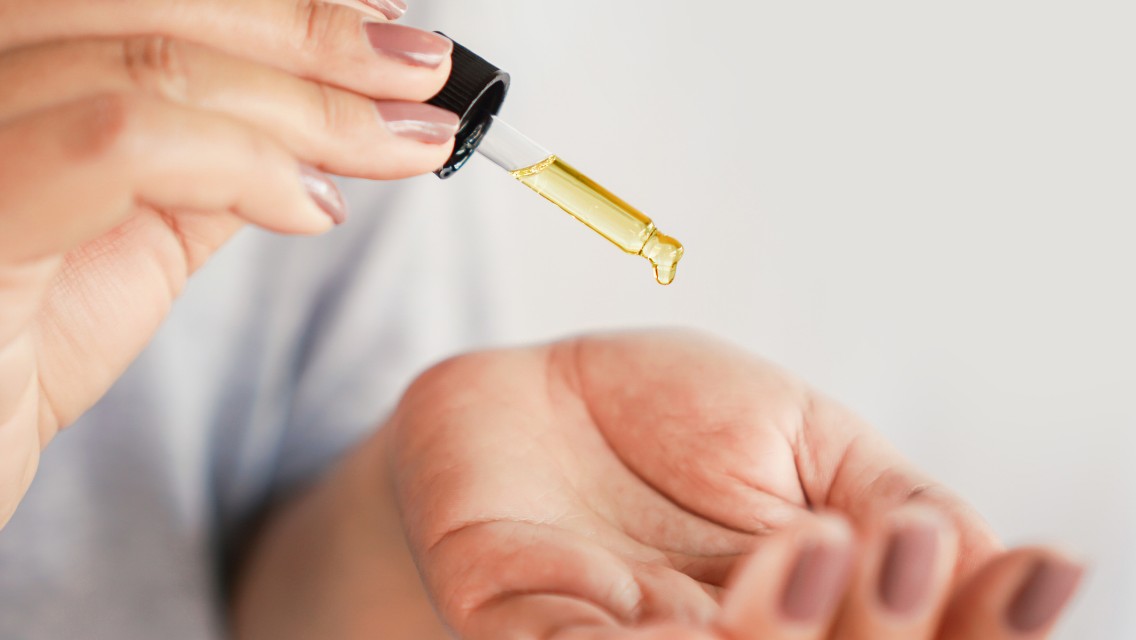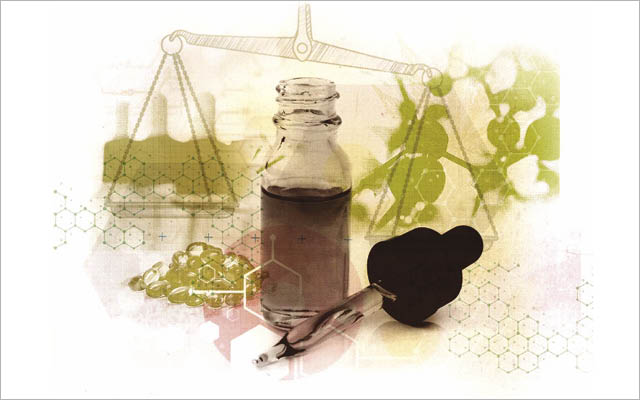Explore the following phytocannabinoids:
Phytocannabinoids are found primarily in cannabis, though they also appear in some legumes, fungi, and rhododendrons. Cannabis also contains phytochemicals called flavonoids and terpenes. These molecules may give different cannabis strains their unique therapeutic properties, as well as any distinct aroma.
Cannabis refers to the drug-variety plant, which contains tetrahydrocannabinol, or THC, the principal psychoactive element. It also refers to industrial hemp, which is legally defined as cannabis containing less than 0.3 percent THC. THC and CBD are by far the most studied phytocannabinoids — and the most abundant.
Still, they’re not the only ones. Researchers have now identified more than 140 phytocannabinoids. Some, such as cannabigerol (CBG), cannabinol (CBN), cannabichromene (CBC), and cannabidiolic acid (CBDA) — known as the minor cannabinoids — are increasingly appearing alongside CBD in products geared toward specific aims. These include improved sleep, better focus, and pain relief.
“I liken cannabis to a bowl of chili,” says Goldstein. CBD and THC are the meat and beans, she says, and the minor cannabinoids, flavonoids, and terpenes are the vegetables and spices. “They have an influence on how the chili tastes — meaning its effect on humans — but they’re not the dominant compounds.”
Most commercially available CBD products are made from hemp, since cannabis plants with higher levels of THC remain illegal at the federal level. In Goldstein’s analogy, you can think of hemp as a Texas chili: mostly meat (CBD) and minimal beans (THC).
But as anyone who’s attended a chili cook-off knows, it’s the other ingredients that make a recipe sing. “It’s a mistake to focus on THC and CBD alone,” notes Robert Rountree, MD, a Boulder-based functional-medicine physician. “They are two chemicals out of hundreds in Cannabis sativa, and they all seem to work in concert with each other.”
1) CBD
Full name: Cannabidiol
Best used for: Sleep, anxiety, stress, inflammation, PTSD
A 2020 survey found that roughly a third of Americans had tried CBD to address pain, inflammation, anxiety, insomnia, headaches, arthritis, or depression. Some pet owners were even using it to help their animals with stress and inflammation. (The bacon-flavored tinctures are an easy sell.)
“I mainly use CBD with my patients for sleep, anxiety, and stress-related symptoms. It’s helpful with calming the nervous system, turning down the alarm bells, and telling your body it’s OK to stand down,” Emmons says. He’s found it particularly helpful for his patients with PTSD who struggle with insomnia.
A growing body of research, much of which has been conducted on animals, has found that CBD’s medicinal benefits are broad. They include antibacterial, anti-inflammatory, neuroprotective, and anticonvulsant effects, as well as nausea reduction, pain relief, and appetite restoration.
CBD blocks the reabsorption (or reuptake) of the body’s own endocannabinoids, allowing them to prolong their effect at the cannabinoid receptors. “This is one way that CBD helps to enhance the function of the endocannabinoid system,” Goldstein says.
Unlike THC, CBD is not intoxicating, though it can be mildly stimulating in lower doses and sedating in higher doses. It’s extremely safe, and side effects are rare. Because it’s metabolized by the liver, however, it can interact with other drugs, so be sure to talk to your medical provider before using it if you’re taking any prescriptions.
Meanwhile, even small amounts of THC appear to boost CBD’s efficacy. “Ideally, a whole-plant cannabis product would be CBD-dominant with a little bit of THC, but also include some of the raw cannabinoids like CBDA, CBGA, and THCA [the acid precursors to the minor cannabinoids],” Goldstein says. “I rarely recommend a purified cannabinoid, for the same reason it’s better to have a whole apple instead of taking a single vitamin.”
2) CBG
Full name: Cannabigerol
Best used for: Depression, anxiety, inflammation, psoriasis
Often referred to as the mother of all cannabinoids, CBG is another non-intoxicating phytocannabinoid that acts as a precursor for the others. “It’s the foundation for producing CBD, CBC, and THC,” Emmons explains.
It’s typically sourced from young plants because CBG levels diminish as plants mature.
“A lot of people report that CBG helps them feel calmer and more focused, but more research is needed to qualify those consumer reactions,” Storey says. It blocks the reabsorption of anandamide — also known as the “bliss molecule” because it contributes to feelings of pleasure and contentment — and this enhances anandamide’s effects.
In response to a recent survey of patients using CBG-dominant supplements to treat anxiety, pain, depression, or insomnia, a majority reported their conditions were “very much improved” or “much improved.”
Goldstein has seen the same results in her patients, alongside other benefits. “I’ve found that CBG helps with pain; it helps with anxiety and depression; and it’s been shown to help with some skin conditions, like psoriasis,” she says.
Researchers have discovered that the skin has its own endocannabinoid receptors (see “The Endocannabinoid System,” further down). The research is still in its infancy, but a study published in 2022 conducted on in vitro skin cells found that CBG can inhibit skin inflammation “more potently than CBD.”
Another case study, from 2019, with two participants, found that topical applications containing both CBG and CBD led to improvement in their psoriasis lesions, while the lesions that received a placebo oil showed no improvement.
“In some studies, it’s been shown to have anticancer effects similar to CBD and THC,” Goldstein adds.
3) CBN
Full name: Cannabinol
Best used for: Sleep, inflammation
CBN is widely promoted as a sleep aid, though there’s not yet much research that can explain how it might work. Studies of people taking isolated CBN haven’t reported sedation, though one small study found that CBN did enhance the sedating effects of THC.
“CBN has a higher affinity for the type 2 cannabinoid receptor, which is more involved in inflammation than with psychoactivity,” Goldstein notes. People who enjoy better sleep when using CBN may be benefiting from lower inflammation rather than a direct sedative effect.
Meanwhile, studies have found that CBN can enhance other phytocannabinoids. In a pre-clinical drug-screening model, CBN increased the neuroprotective action of THC. And in an animal study, a combination of CBN and CBC offered more pain relief than either compound alone.
4) CBC
Full name: Cannabichromene
Best used for: Pain, gut inflammation
“CBC is really understudied,” Goldstein says. Still, like CBD, CBN, and CBG, CBC is non-intoxicating and appears to enhance the efficacy of other phytocannabinoids.
One study found a greater anti-inflammatory effect from CBC and THC in combination than either alone. And a paper published in 2013 showed that CBC improves the viability of neural stem progenitor cells, which are critical to brain health and healing.
Some research has focused on CBC’s impact on inflammatory pathways in the gut. A study published in 2012 found that CBC normalized gut motility in a mouse model of intestinal inflammation, though the mechanism remains unclear.
Researchers in 2020 revealed that both CBG and CBC display antitumor effects against gastrointestinal cancer cells, inducing significantly higher rates of cancer-cell death compared with other cannabinoids.
5) CBDA
Full name: Cannabidiolic acid
Best used for: Pain, inflammation, epilepsy, nausea
Found in raw cannabis flowers, CBDA converts to CBD when heated. Animal studies have shown it to have antidepressant and antianxiety effects.
Like other phytocannabinoids, CBDA targets serotonin receptors as well as specific cellular sensors called transient receptor potential channels; these are involved in pain, inflammation, skin function, brain function, and cancer. “They’re like tunnels on the cell membrane that allow ions to go in and out of the cell, which regulates how the cell functions,” Goldstein explains.
CBDA can be especially potent for inflammatory conditions. “I have a 91-year-old in my practice who developed gout a couple of years ago,” she says. “We found that a daily dose of CBDA kept the gout away, but when he stopped taking it, it flared.”
Although Goldstein usually recommends formulas with some THC for pain relief, she views CBDA as a great option for those who wish to steer clear of THC’s potentially intoxicating effects.
Go Deeper
For more on the health benefits of cannabis, see “Meet the New Phytocannabinoids,” from which this article was excerpted.





This Post Has 0 Comments